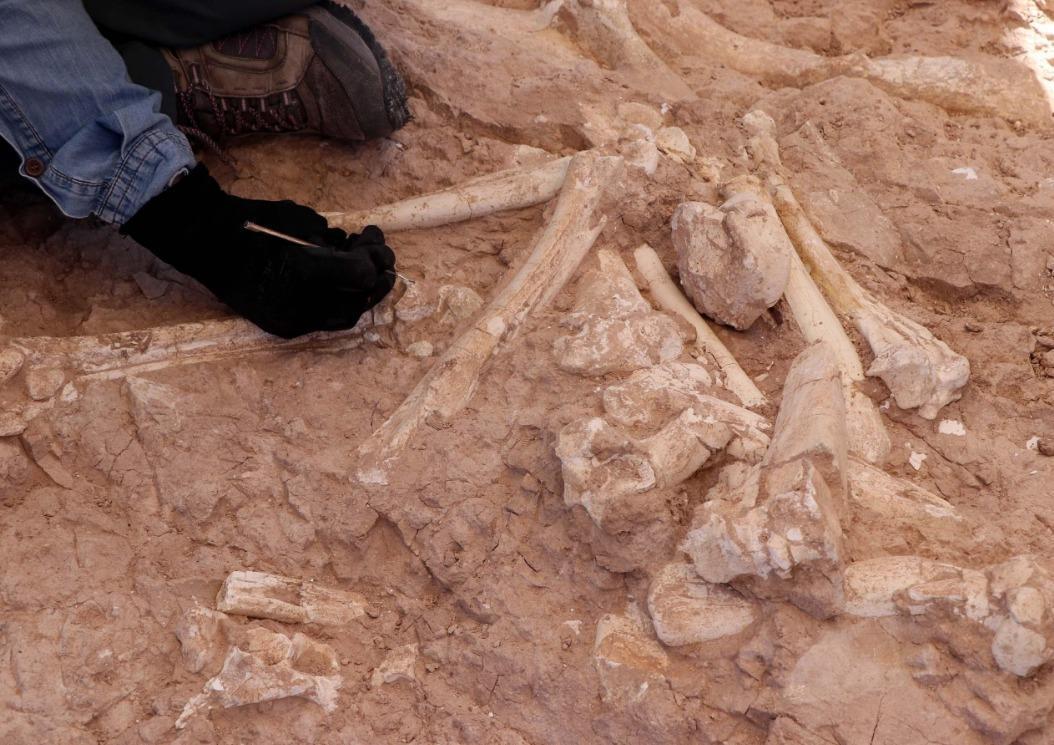Giraffe bone found in Kayseri excavations
KAYSERİ

A 7.5-million-year-old giraffe forearm bone has been found during this year’s excavations that have continued since 2018 on the shore of Yamula Dam in Kocasinan district of the Central Anatolian province of Kayseri.
Anthropologist Oğuzhan Köylüoğlu said, “This year's work started on June 7, and we have found nearly 30 fossils so far. Normally, we would find jointed fossils of horses and mammals we call 'Bovidae.' But this year, we found a giraffe forearm bone. It has been preserved well and has survived to the present day.”
Murat Adıyaman, a shepherd in Kocasinan district, found a bone fragment on the shore of Yamula Dam in Taşhan district in 2017. The examination of the samples taken from there revealed that the bone fragments date back to 6 to 7.5 million years ago and then in 2018, excavations were initiated in the area.
The giraffe arm bone, which will be removed from the ground with the plaster jacket method, will be exhibited at a museum.
Speaking about the works, Köylüoğlu said, “So far, we have found 612 fossils in the Yamula Dam localities [small settlements]. They are divided into different localities. Fossils unearthed here are called ‘proboscidea,’ ‘giraffidae’ and ‘Bovidae.’ Apart from this, we also find carnivorous animals and creatures that we call pigs.”
Stating that this year they had unearthed nearly 30 fossils, Köylüoğlu said, “We removed 10-15 of them from the ground. But the giraffe bone was more important to us. This is a well-preserved fossil that has survived to the present day with its parts we call the 'radius flour' and the 'humerus.' We are making studies on them. Apart from the giraffe, we also find animals such as horses, sheep, goats and antelopes. But a distinctive feature of the horse from today's horses is that it has three-toed hooves. This belongs to a type of horse that we call 'hyperion,' which evolved 7.5 million years ago.”
Stating that a team of 10 people was working on the excavations in Kayseri, Köylüoğlu said the following:
"In summer, students also come when the land opens. Unlike previous years, we have a clod process on fossils this year. Fossils are normally opened and numbered in the first place, but this year we aim to remove them as clods. When many fossils are intertwined and we cannot remove them one by one, we use this method we call ‘clods.’ It means we open the area of the fossils and remove them with the earth as a whole.”
















